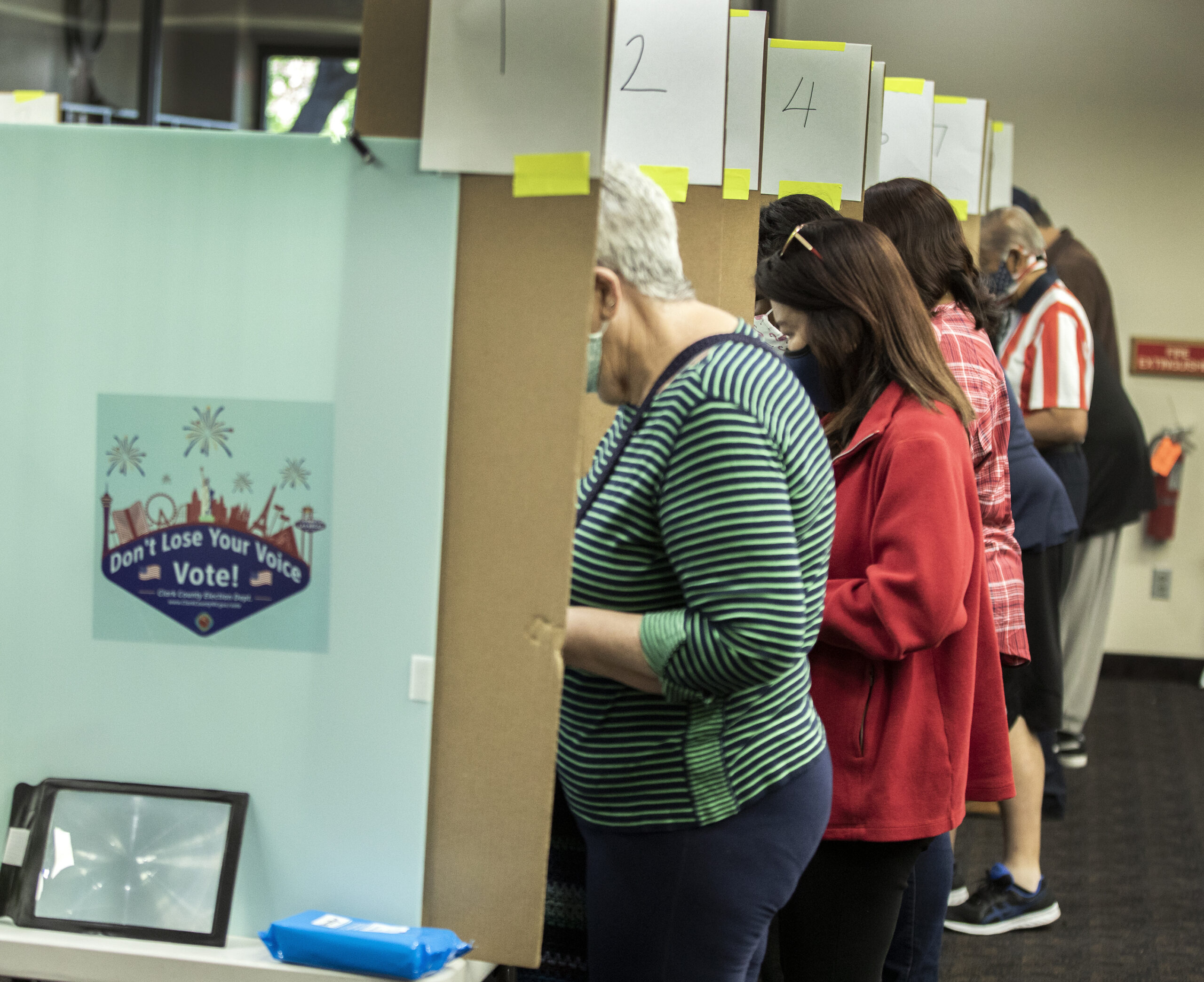Even in a ‘red wave’ year, GOP faces uphill battle in key U.S. Senate race

For anyone who has been paying attention to voter registration numbers, it’s pretty obvious that both major political parties have a branding problem in Nevada. Non-major party registrations now make up the largest share of voters in the Silver State — meaning their influence on the upcoming election is also larger than ever.
In such swing states, it has always been true that to win the general election a candidate must pivot toward those all-elusive “independent” voters. Now that these voters comprise a plurality in the Silver State, this fundamental rule of electoral politicking is more important (and trickier) than ever — especially given the difficulty in identifying what percentage of these non-major party voters are, actually, “independent” in their voting habits.
Many “independents” remain fairly partisan, despite not subscribing to the Democrat or Republican label. However, the number of truly independent voters — those who, in practice, shed partisan loyalty and remain undecided — has been on the rise in recent years, and is quickly becoming the most influential share of the electorate.
Among non-major party voters in Nevada, Democrats lead with a five-point margin, according to the latest poll conducted by OH Predictive Insights. However, more than half (51 percent) of those voters remain undecided in the upcoming election or are planning to vote third-party — a group we can call the “true-true independents” in Nevada’s politics. It’s an alarming percentage of voters in a state that is so evenly split between Democrats, Republicans and non-major party registrations.
As the GOP primary unfolds and Democrats get ready to defend their majorities, it is becoming abundantly clear that neither party has a strong grasp of how to attract true-true independents. For example, while this group believes Democrats are generally a better option for running the state, more than a third (38 percent) say “neither” party would actually run it well.
Clearly then, this slice of the electorate represents a group who are disenchanted even with the party they generally tend to favor. In fact, they show more unfavorability for both major parties than the state as a whole.
They are basically the growing “anti-partisans” in electoral politics, and their habits demonstrate a blatant disinterest in the current behaviors of both major parties. Their “unaffiliated” voter registration is, effectively, a reflection of feeling politically homeless in an increasingly divided and contemptuous partisan landscape.
Given the political emphasis of our news cycle nowadays, it’s unsurprising that this cohort of voters are also among the least likely to consume news from any source on a weekly basis. It seems they have “checked out” of much of politics — if they were ever “checked in” to begin with — ranking as the least likely to have heard of major statewide elected officials.
The result is an electoral forecast not easily determined by mere party association. While these voters’ opinion is split on the U.S. Senate race, for example, they nonetheless have a nearly 2:1 favorable opinion of Nevada’s Democratic governor, Steve Sisolak — indicating that the letter in front of a candidate’s name isn’t going to be what drives these folks to vote for them.
Most importantly for Republicans looking to win over the hearts and minds of these undecideds is that the issues important to this voting bloc aren’t the “red-meat” issues of GOP primaries. Instead of voter integrity or immigration policy, these Nevadans are focused on far more down to earth, kitchen-table topics such as education and the economy — followed closely by healthcare.
In many important ways, these folks are about as far as one can get from the current GOP primary audience or the Democrat Party’s more progressive activists. While they are, undoubtedly, dissatisfied with Biden and Democrats in general, they nonetheless still lean toward team blue — but not out of any loyalty to the party’s brand. They’re fed up with the partisan theatrics of both teams, and their voter registration status reflects their growing dissatisfaction with the way both parties have been behaving.
Given the national climate and Joe Biden’s unpopularity, Republicans could certainly siphon enough support from this group to enjoy the spoils of a “red wave” election year — provided they understand the political independence of these nonpartisans. However, for both Democrats and Republicans, the challenge in courting such voters is the increasingly toxic partisan nature of our current politics, since it’s been that partisanship and division that has likely swollen the ranks of the true-true independents in the first place.
The rhetorical migration toward the political fringes within each party has certainly made the growing bloc of true-true independents more important than ever for electoral victory. Ironically, it’s also made them more difficult for partisan politicians to actually win over in states like Nevada.
Editor's note: OHPI conducts occasional polling for The Nevada Independent.
Mike Noble is the chief of research for OH Predictive Insights (OHPI), a non-partisan public opinion polling and market research firm headquartered in Arizona. Noble found a passion for politics while working for an Arizona congressman; since then, he has become a pollster in the west.
